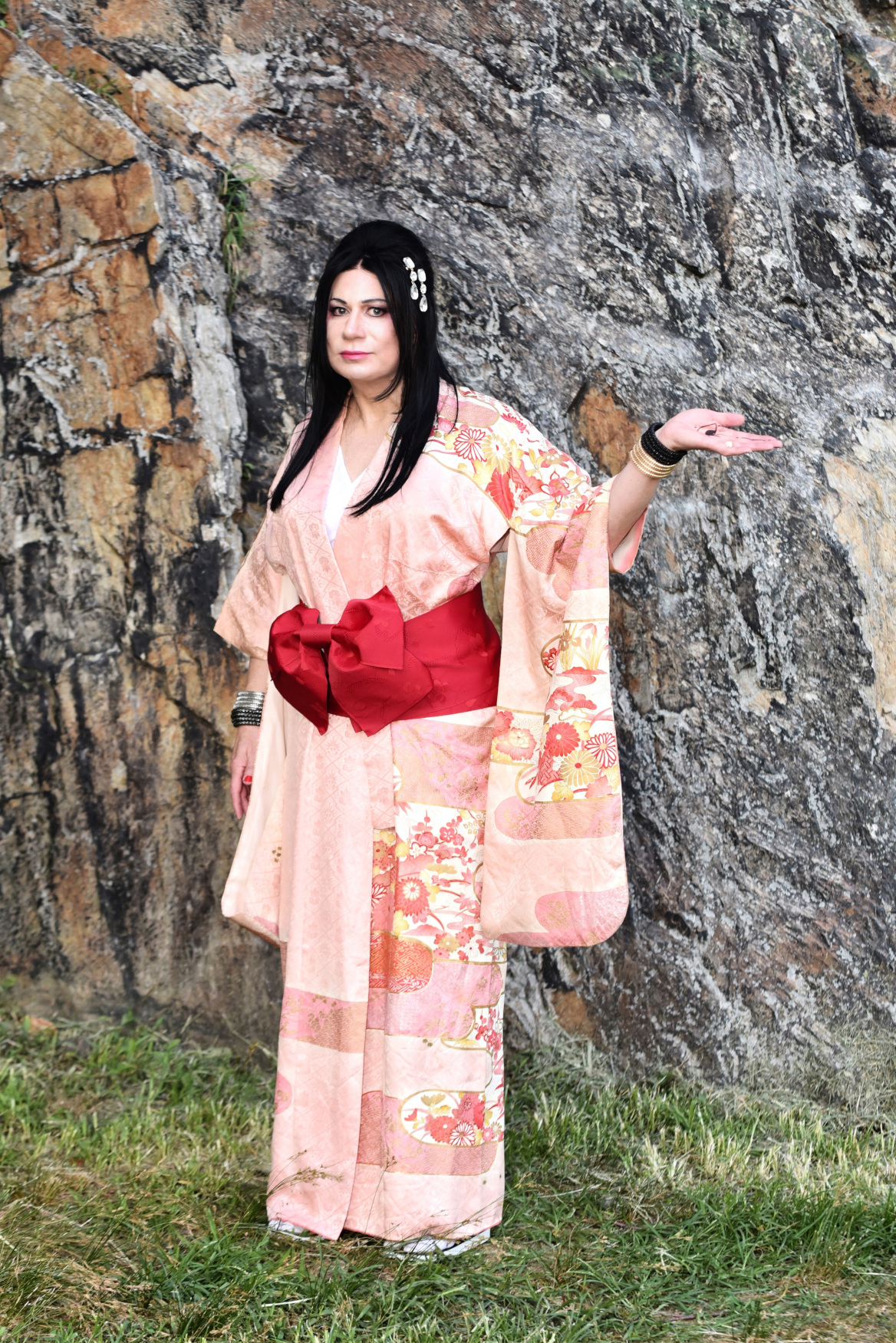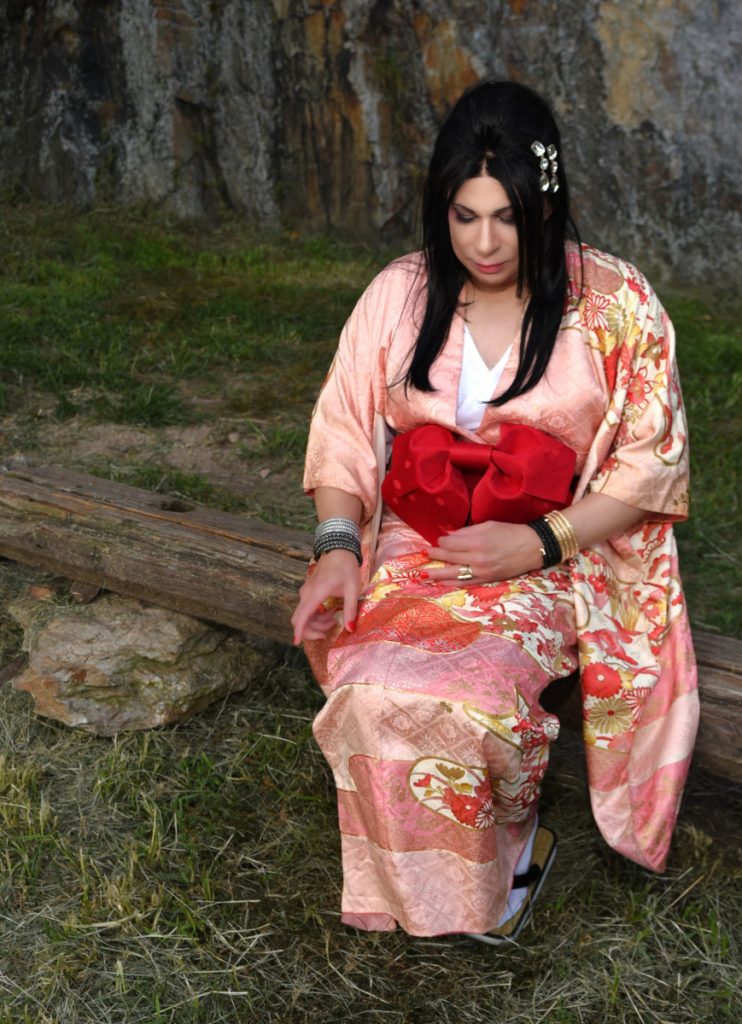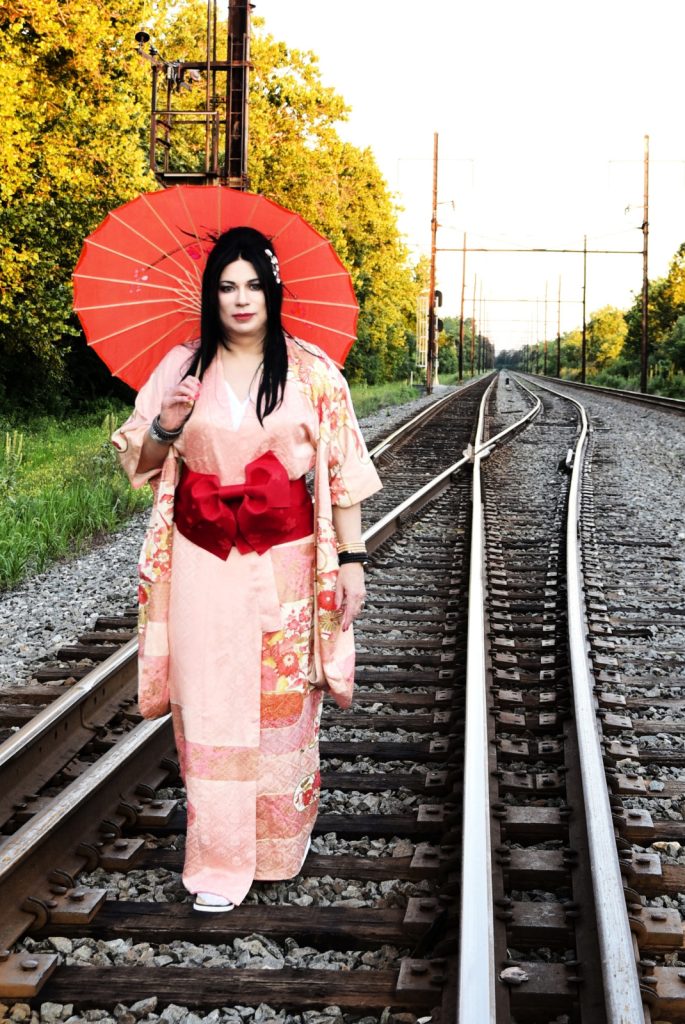

A Day as a Geisha
Nora A. Simone
She paints her face to hide her face.
Did you know the forerunners of Japanese geisha were men?
This was news to me as my long-standing belief was that geisha were always women. Women geisha made sense given my understanding of their historic and current role in Japanese society.
Let me explain.

What is a Geisha?
The Japanese word geisha literally means “art person.” Singing, dancing, and playing the samisen (a lute like instrument) are indispensable talents for a geisha, along with the ability to make conversation. Many geisha are also adept at flower arranging, performing the tea ceremony, or calligraphy. Do you agree that this collection of traditional knowledge, skill, and ability seems most appropriate for women?
Yet, researching the topic reveals the fact that the first in this role were men. Dating back to the 1200’s these men were advisors and entertainers to their daimyo (feudal lords). Among other things, they were tea connoisseurs, artists, and gifted storytellers. Apparently during Japan’s Edo Period (between 1603 and 1868), between 500-600 men were working in this role. Once women were allowed to serve this role, about 1751, they eventually dominated the profession.
Intrigued with this gender diverse background, I decided to present as a traditionally accurate female geisha for a day in public. My experiences out and about are normally educational and this was no exception. Consequently, I’ve decided to share some notes and photos from my experience.
Getting prepared was surprisingly challenging.
For example:

- Costume: The average Japanese woman is petite at 158 cm while I top out at 183 cm! Thus, finding appropriately sized traditional garments required a lengthy search. Though possible to purchase an inexpensive costume online, I sought authentic garments and accessories. Collecting a silk kimono (robe), juban (underclothing), geta (shoes), tabi (socks) and an obi (kimono sash) was a treasure hunt.
- Makeup: The signature white face makeup customary to geisha required trial and error and error. Eventually, I found a makeup artist willing to give it a go. Heavy white face makeup was a geisha signature because it looked better in the light. In dim candlelight, wearing thick white makeup created a porcelain look. Requiring multiple layers left my face frozen as if it were a mask. Yet, I was pleased with the result!
Some lessons learned
- The silk kimono was soft and luxurious! I do not remember feeling anything so nice. The layer of juban visible around my neckline created a multilayer classic look. I now understood why someone would want to wear it every day.
- Originally, all obi were tied in the front. Later, fashion began to affect the position of the knot, and obi could be tied to the side or to the back. As obi grew wider the knots grew bigger, and it became cumbersome to tie the obi in the front. By the end of the 17th century obi were mostly tied in the back. With inspiration from an old tradition, I kept mine in front.
- The trick for wearing geta is to slide forward, and not expect your foot to roll as your footwear bends and follows your step. Actually, geta are the reason for the distinctive small steps of that classic “kimono-walk.” If you are tempted to try them, note that it is extremely difficult, impossible really, to walk any distance without a lot of practice.
- It turns out that after WWII the more unsavory reputation of geishas as sex workers began. Some women already engaged in that profession advertised their services under the moniker ‘geisha girls’ when American servicemen thronged the streets of Japan. This saddens me, yet I’m appreciative of the opportunity to learn the truth in history.
The Experience
Out in public, I was mindful of a Japanese saying “The nail that sticks out is struck.” That means when you are different, you’re likely to get criticized. Yikes! As a tall geisha with a professional photographer in the USA we certainly drew attention, yet even the most curious was respectful. Acting as though I did not understand English, I posed for photos as directed by the photographer. No, I did not honor requests to be photographed with anyone else. Would you?
To those who question my motives for having this experience, I wish to make clear it was simple cultural appreciation, not appropriation. I sought to respectfully present an element of Japanese culture with no purpose for economic or social gain exploitation. To me, it’s art.

Photos of Nora by Cassandra Storm. Nora’s makeup by Megan Crozier.
Nora A. Simone empowers others by dispensing truth | noarsimone@yahoo.com